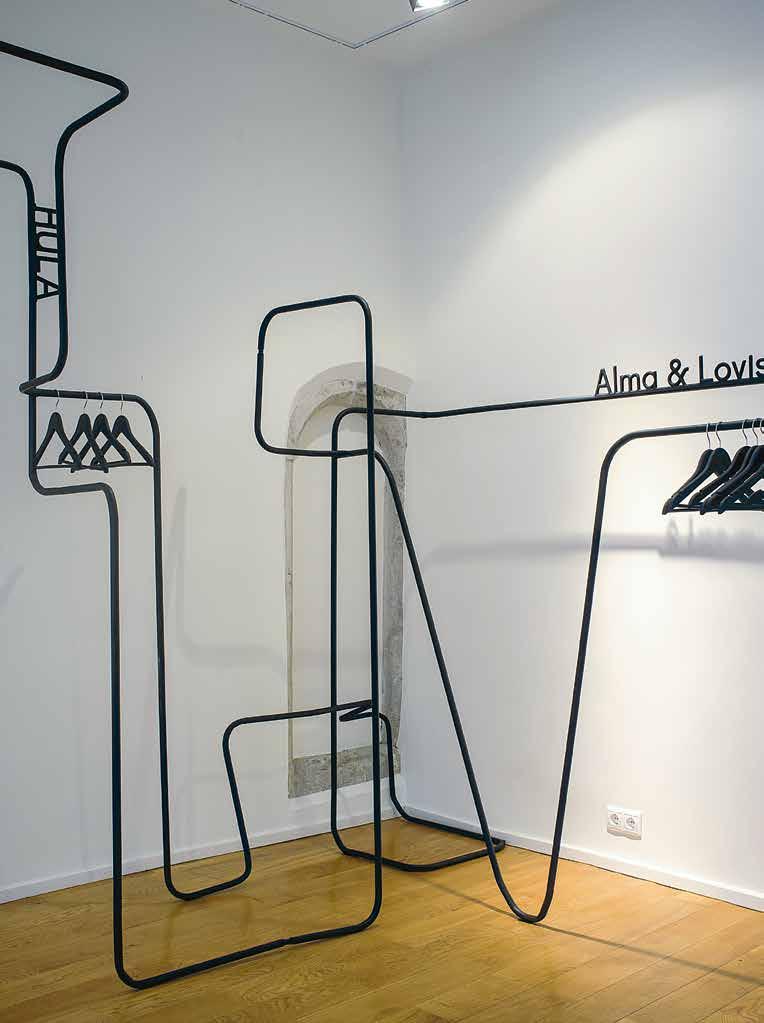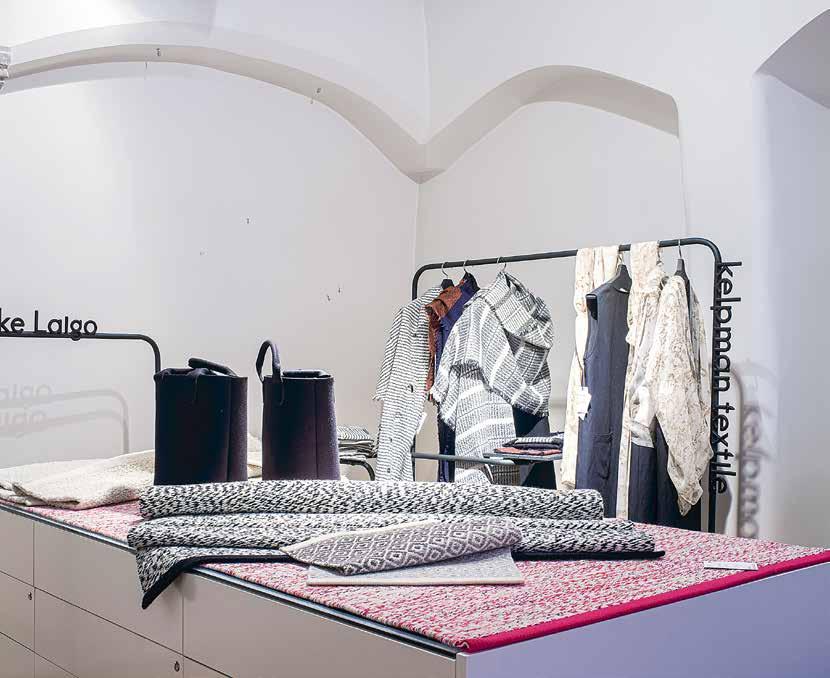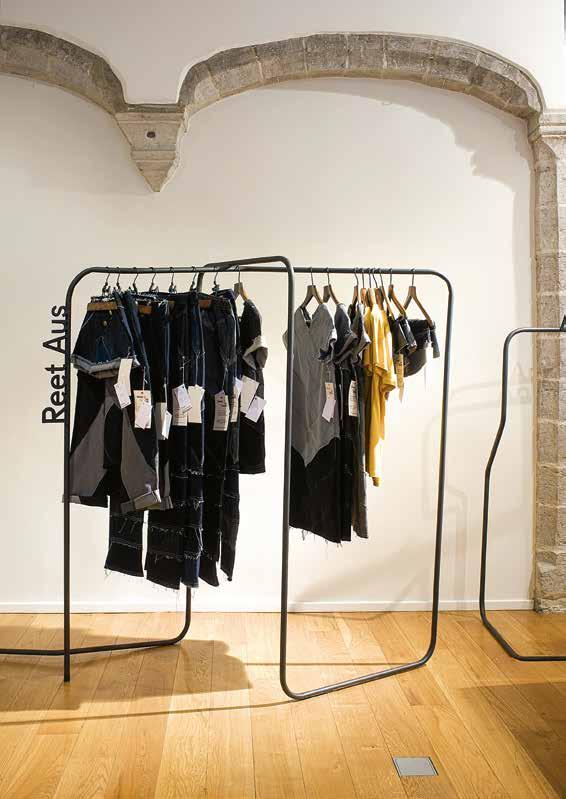
4 minute read
POPUP SHOP „dISAIn, LOOMULIKULT!”
from RUUMIPILT 2012
KaoS arhitektide asutajad on arhitekt Margit Aule ja sisearhitekt Margit Argus. Neid huvitab avalik ruum nii hoonete sees kui ümber. Näituste ja muuseumide töögruppides on hiljuti valminud olulised objektid nagu Lennusadama Meremuuseum ja Tallinna Teletorni rekonstruktsioon.
The founders of KAOS Architects are the architect Margit Aule and the interior architect Margit Argus. They are interested in public space both within and around buildings. Key objects like the Seaplane Harbour Maritime Museum and the reconstruction of Tallinn’s television tower have recently been completed in the working groups of exhibitions and museums.
Advertisement
www.kaosarhitektid.ee
popup shop “dEsign, naturally!”
aadress/address: autorid/authors:
tellija/client: teostus/implementation:
fotod/photos:
Suur-Karja 3-2, Tallinn Margit Argus, Margit Aule (KAOS Arhitektid) Goethe-Institut Estland Kaarel narro, Tõnu narro
KAOS Arhitektid
Mäletan, et see kujundus avaldas muljet. Ühtaegu mugav, leidlik ja esteetiline. parim osa kujundusest oli see, et väärtustas ruumis olevat väljapanekut. seda juhtub harva.
Reet Aus, moedisainer ja „disain, loomulikult!” eksponent

Disainimaailma ja kaubanduselu kohtumispaigaks on galerii – valge kuup –, kus ruumi ja ekspositsiooni kooskõla on raske ülehinnata. Sedakorda kohtusid siin erinevad kultuuriruumid ehk siis loomingulised natuurid, kes sulanduvad üheks oma sarnasuste ja erinevustega.
Mis on selle näituse tekkelugu ja kuidas see alguse sai? Margit Argus (MA): Tegemist on ettevõtmisega, mille initsiaator oli goethe Instituut Eestis ja see oli osa iga-aastasest festivalist „Saksa kevad“. Mõte oli eksponeerida jätkusuutlike disainerite loomingut nii Saksamaalt kui ka Eestist, teha PopUp Shop, mis on nii näitus kui ka pood. Eksponeeritud autorid kasutavad innovaatilisi, loodust säästvaid materjale ning tehnikaid, vastandudes sellega kiirmoele ning vastutustundetule ületarbimisele. Vaid kümneks päevaks oli valgete seintega galerii vaja muuta ekspositsiooni- ja müügiruumiks Eesti ja Saksa disainerite rõivastele ja aksessuaaridele. Kujundus võeti osadeks lahti ja säilitati, et seda uutel näitustel taaskasutada. Margit Aule (MA): goethe Instituut ja selle juht ralf Eppeneder on olnud ideaalne tellija: esitab põneva ülesande, usaldab, aga kontrollib ja peab lugu kvaliteedist. Selliseid tellijaid oleks rohkem vaja. Inimesed on selle näituse väga hästi vastu võtnud.
Milline oli hoone, ruumi, näituse sisu ja kujunduse omavaheline suhe? Kuidas arenes välja näituse kujunduskontseptsioon ja mis on inspireerinud? MA: ruum ja näitus lõid terviku. arvestatava hulga riiete eksponeerimiseks on parim abivahend stange – sellest tulenes idee kasutada kõiki ruume läbivat musta painutatud metalltoru, mis joonistaks uue graafilise joonemustri valgesse keskkonda. Toru lahendas kõik näituse vajadused. Selle külge sai riputada esemed riidepuudega, konksude abil kotid, kingade ja kokkuvolditud riiete jaoks kinnitusid toru külge riiulid. Samuti olid toru küljes kaubamärkide nimed.
Kas miski on läinud teisiti, kui algselt plaanitud (nn Murphy seaduse järgi)? MA: algne kontseptsioon oli eksponeerida esemeid hõljuvatel „paberilehtedel”. Siis selgus, et vaja on hoopis stangesid. Paar nädalat enne tähtaega muutsime kontseptsiooni ja korraldasime valmistamise nii, et kõik loksus õigeks ajaks paika.
The gallery is the place where the design world meets the life of commerce and trade – a white cube where it is difficult to overestimate the harmony of space and exposition. This time, different cultural spaces met here, in other words creative dispositions that coalesce into one with their similarities and differences.
How did this exhibition come about and where did it start? Margit Argus (MA): The initiator of this endeavour was the Goethe Institute in Estonia and it was part of the annual German Spring Festival. The idea was to display the creative work of sustainable designers from both Germany and Estonia, to create a PopUp Shop that is both an exhibition and a shop. The displayed authors use innovative materials and techniques that conserve nature, thus opposing rapidly changing fashion and irresponsible over-consumption. The gallery with its white walls had to be converted into an exposition and sales space for clothing and accessories by Estonian and German designers for just ten days. The design was disassembled and preserved in order to reuse it in subsequent exhibitions. Margit Aule (MA): The Goethe Institute and its manager Ralf Eppeneder have been an ideal customer: it presents an intriguing task, places its confidence in you but also checks up on you, and places a premium on quality. More customers of this kind are needed. People received this exhibition very well.
What was the relationship like between the building, the room, the content of the exhibition and the design? How did the exhibition’s design concept develop and what inspired you? MA: The space and the exhibition created a whole. The best means for displaying a considerable amount of clothing is the clothes rack – this is what led to the idea to use bent black metal piping running through all the rooms that traced a new graphic line pattern in the white environment. The piping took care of all the needs of the exhibition. Objects with clothes hangers could be hung on it, as well as bags with the aid of hooks. Shelves were attached to the piping for shoes and folded clothing. Brand names were also attached to the piping.
Has anything gone differently than you originally planned (according to Murphy’s Law)? MA: The initial concept was to display objects on floating “sheets of paper”. Then it turned out that clothes racks were needed instead. A couple of weeks before the deadline we changed the concept and organised the preparations so that everything fell into place in time.
1m
Põrandaplaan Floor plan
5m


I remember that this design left an impression on me. Cosy, resourceful and aesthetic all at once. The best part of the design was the fact that it appreciated the exposition in the room. That rarely happens.
Reet Aus, fashion designer and expounder of “Design, naturally!”










